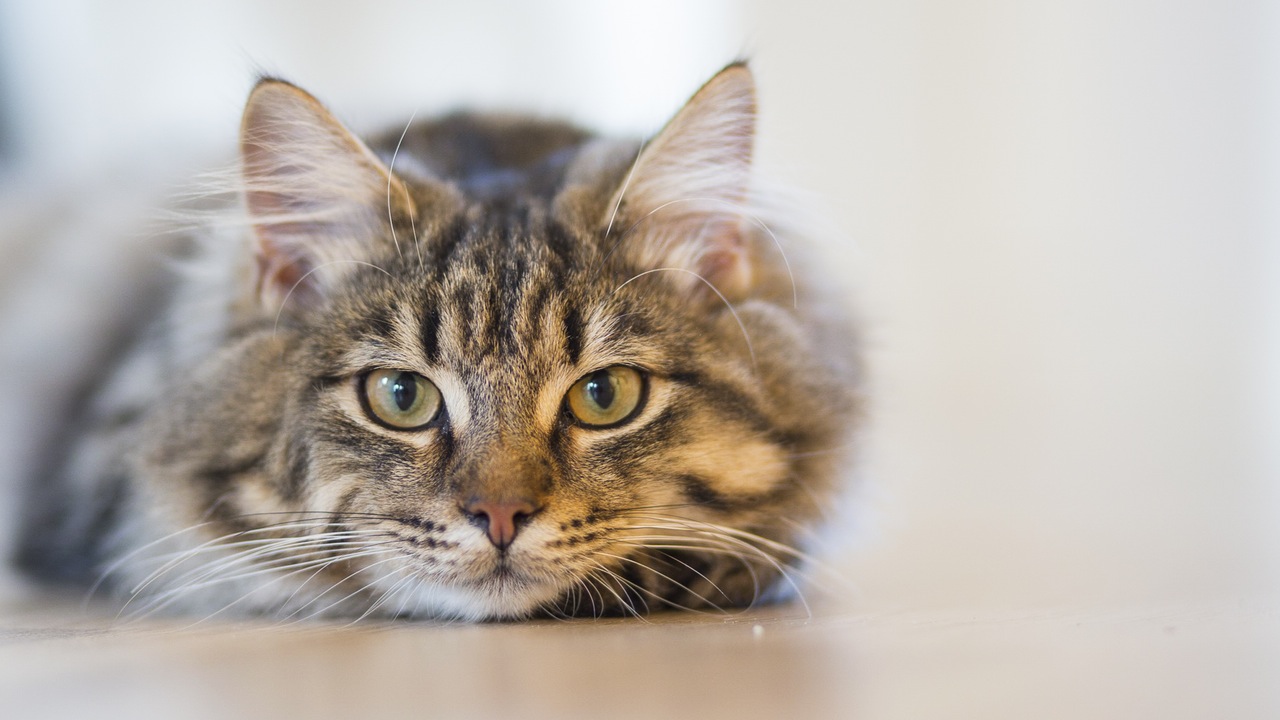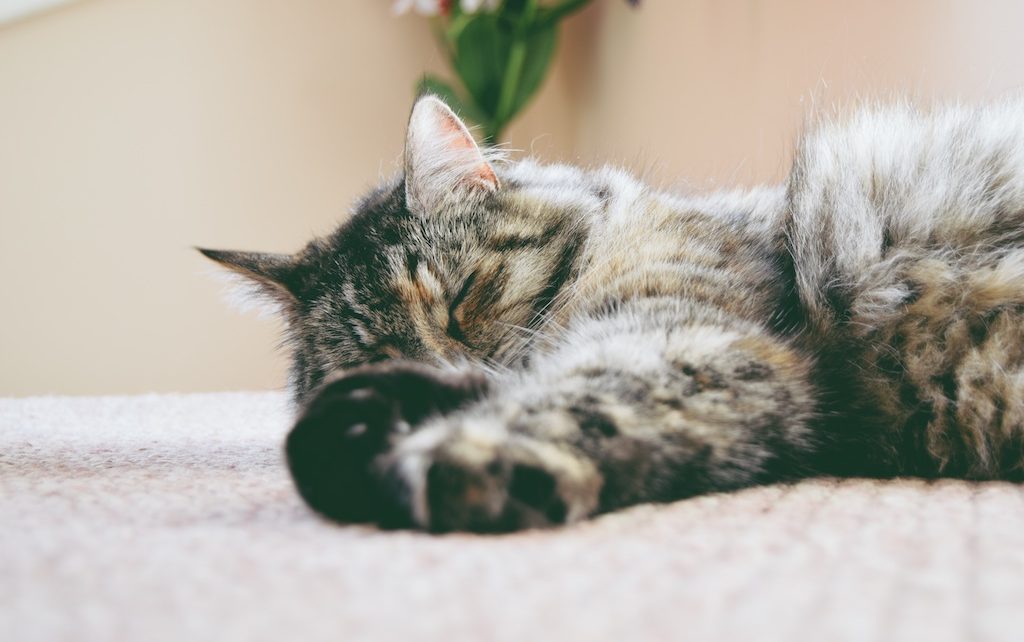I don’t really understand feline psychology, but I do realize that my cats felt a big change when the baby first came home. Maybe even earlier, with all the changes in routine, around the house and even on my body during those 9 months.
Stress in animals can result in a weakened immune system
We began finding large pieces of fur throughout the house. At first we thought that the two were fighting when we were away from home. Then, we noticed that their ears and belly were peeling. There were also showing signs of itchiness and sores were appearing from all the scratching. The constant need to lick the afflicted areas was also weird.
Mia, our medium-haired Persian mixed-breed, was most affected. Her belly lost its fur on a daily basis. One day it was almost completely gone, showing her pink-colored skin underneath. Pepper, the cross-bred Norwegian Forrest, despite her long fur, continued to show a good coat, with less noticeable peeling.
What we did
I called our “cat consultant,” my elder sister, who is an animal trainer and a vet tech. She had twenty years of experience and encyclopedic knowledge of all things pet: feeding, walking, caring, pampering and chatting with the. Calling her a “pet whisperer” is kind of an understatement.
I told her about the symptoms we noticed and the “fur-storms” around the house and she immediately proclaimed “ringworm” – on the phone! I must confess I doubted at first but she normally gets it right! So she ordered me to take the cats out of our house immediately, even if only for a short time, because both the baby and us were at risk of getting it, too.

What is this?
Dermatophytosis is the clinical name for the type of infection that occurs in the upper layers of the skin, commonly known as “ringworm”. Dermatophytosis is an extremely contagious disease which is transmissible to humans, depending on the fungus which is causing it, amongst other factors.
We went to the vet for confirmation of our ‘pending doom’, which they did by extracting hair from the affected areas and sending them in for culture (which means we have to wait for the fungus to develop in laboratorial conditions).
The fungus that caused this type of “itchy dermatophytosis” (a totally made up name that I applied to this condition after the episode we had) may be found anywhere on the animal and may exist unnoticed on a kitten, showing up only in cases of vulnerability.
Our cats’ treatment included a three weeks at my sister’s home, complete shearing of their fur, almost daily bathing with specific ringworm-treatment shampoo, one month of medication and one month of ointment on the wounds. Our furry felines weren’t the happiest for it, but it was necessary.
At our own home, we bleached and disinfected, throwing all our sheets, blankets, clothes, rugs and anything else the cats may have been on into the laundry. Thankfully, we never experienced symptoms of ringworm. After the three weeks, our cats came home. We had collectively reduced the chances of contracting ringworm.
It all worked out in the end
Our cats finally became acquainted with the new “mini-tenant” of the home. Needless to say, the cats continued to exist wherever they liked! But this time we were aware and protected.

While they were bathing, all angry and meowing – I heard my husband talking to the lionesses: – “Who said that kitties don’t like to bathe? Let’s calm down now or instead of one bath I’ll have to give you two”. My poor things… And just to make matters worse, what do cats really love? Why, the hairdryer of course.
It just worked out in the end and baby and our lionesses were all the better for the way we solved it. Hard work and perseverance to get rid of it once and for all – and ALL our babies were safe.
Maria Cristina Pimentel
This and other articles can be read on the App. Try it now:



Leave a Comment